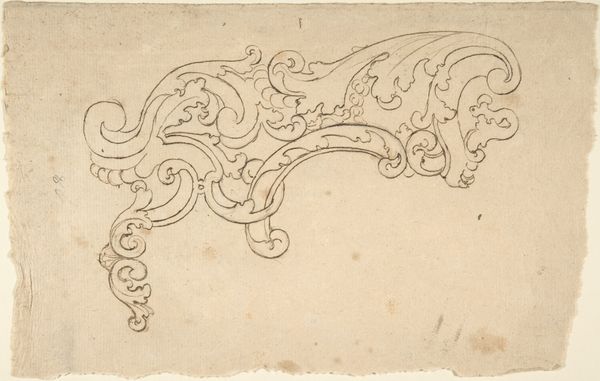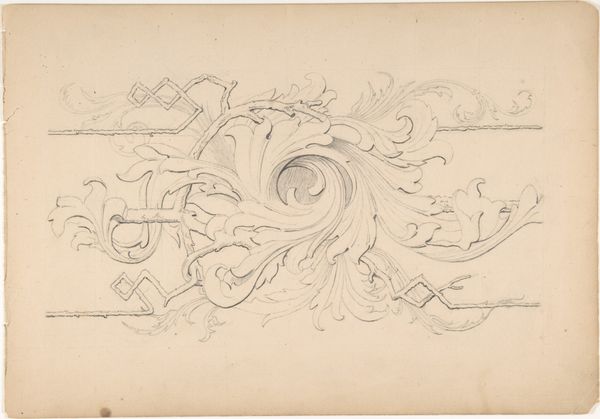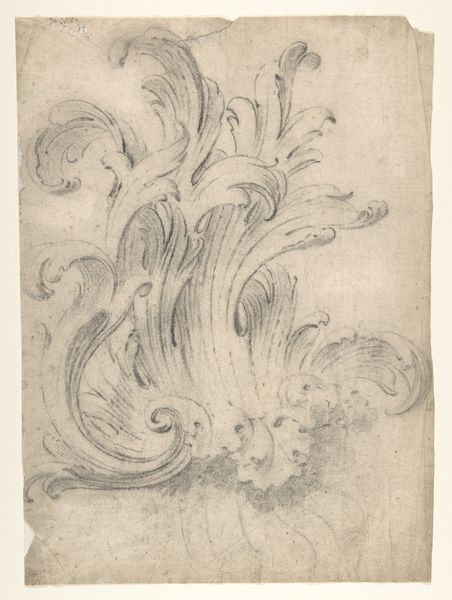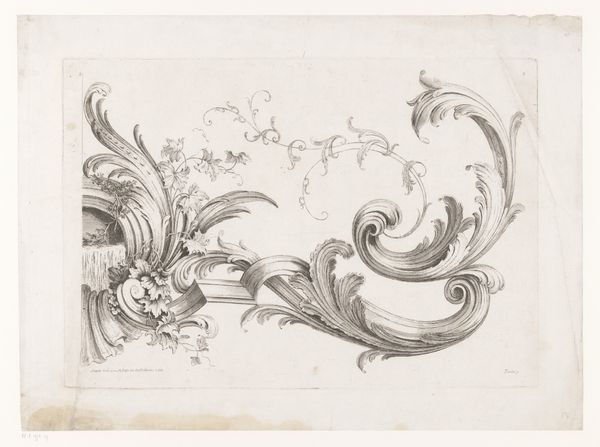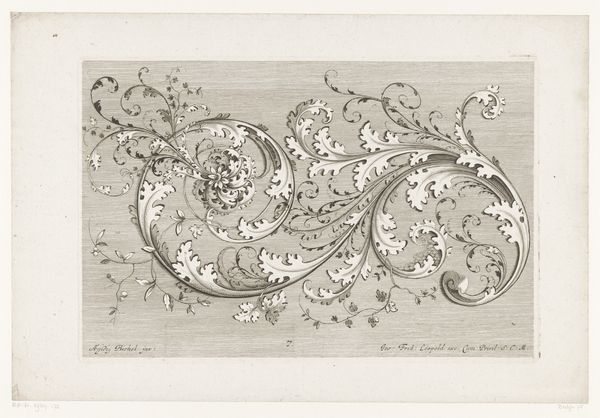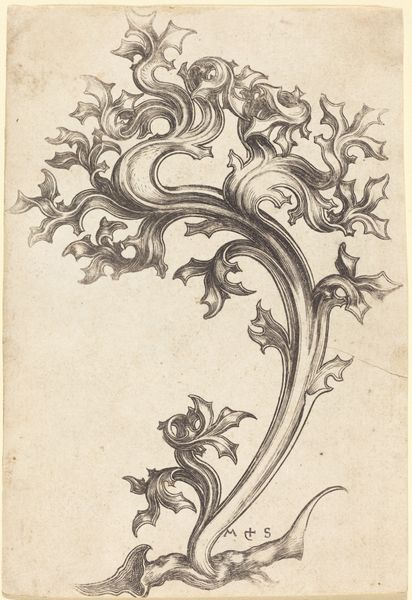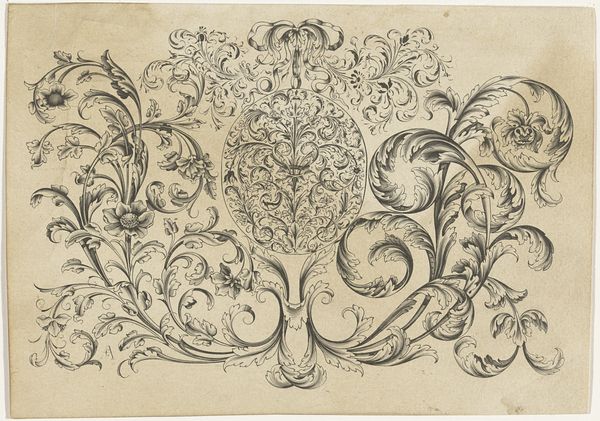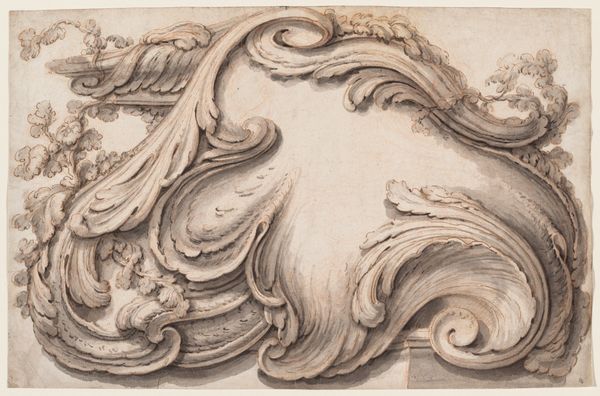
drawing, print, graphite
#
drawing
# print
#
graphite
#
rococo
Dimensions: 11 x 7 5/8 in. (27.9 x 19.4 cm)
Copyright: Public Domain
Curator: Immediately I’m drawn to its asymmetrical dynamism, the way the lines swerve and curl creates a feeling of movement despite it being a static image. Editor: You’ve eloquently described Rococo tendencies. We are looking at an 18th-century work entitled "Rococo Cartouche" currently held in the collection of the Metropolitan Museum of Art. It’s an anonymous drawing, likely a preparatory study in graphite, intended to be printed. Curator: Ah, a template of sorts. Looking closer, the composition hinges on this elaborate frame—an asymmetrical flourish balanced by delicate foliage. Notice how the graphite hatching enhances the depth, especially within the volutes and leaf structures. Editor: Indeed. These cartouches served a function beyond mere ornamentation. Think of them as symbolic containers. The swirling acanthus leaves were not just decoration; they represent endurance, rebirth, and artistic inspiration. What was meant to be displayed within the border also held significant value. Curator: An interesting point. Does the absence of an explicit subject matter influence the viewer? Do we project our own meaning onto it, allowing it to function almost as a Rorschach test? Editor: Possibly, yes, it encourages projection. The Rococo style loved to hint at meanings through symbolic devices rather than state them outright. By placing emphasis on form and beauty, they appeal to pleasure and imagination through association. The vacant interior invites interpretation but, it also signifies power as a placeholder. Curator: A fitting way to sum up the period. This drawing really encapsulates the Rococo’s playful, intricate, and slightly decadent spirit, doesn't it? Editor: Exactly! It provides a looking glass into the aesthetic values of the 18th century through the manipulation of graphic symbols and cultural archetypes.
Comments
No comments
Be the first to comment and join the conversation on the ultimate creative platform.

